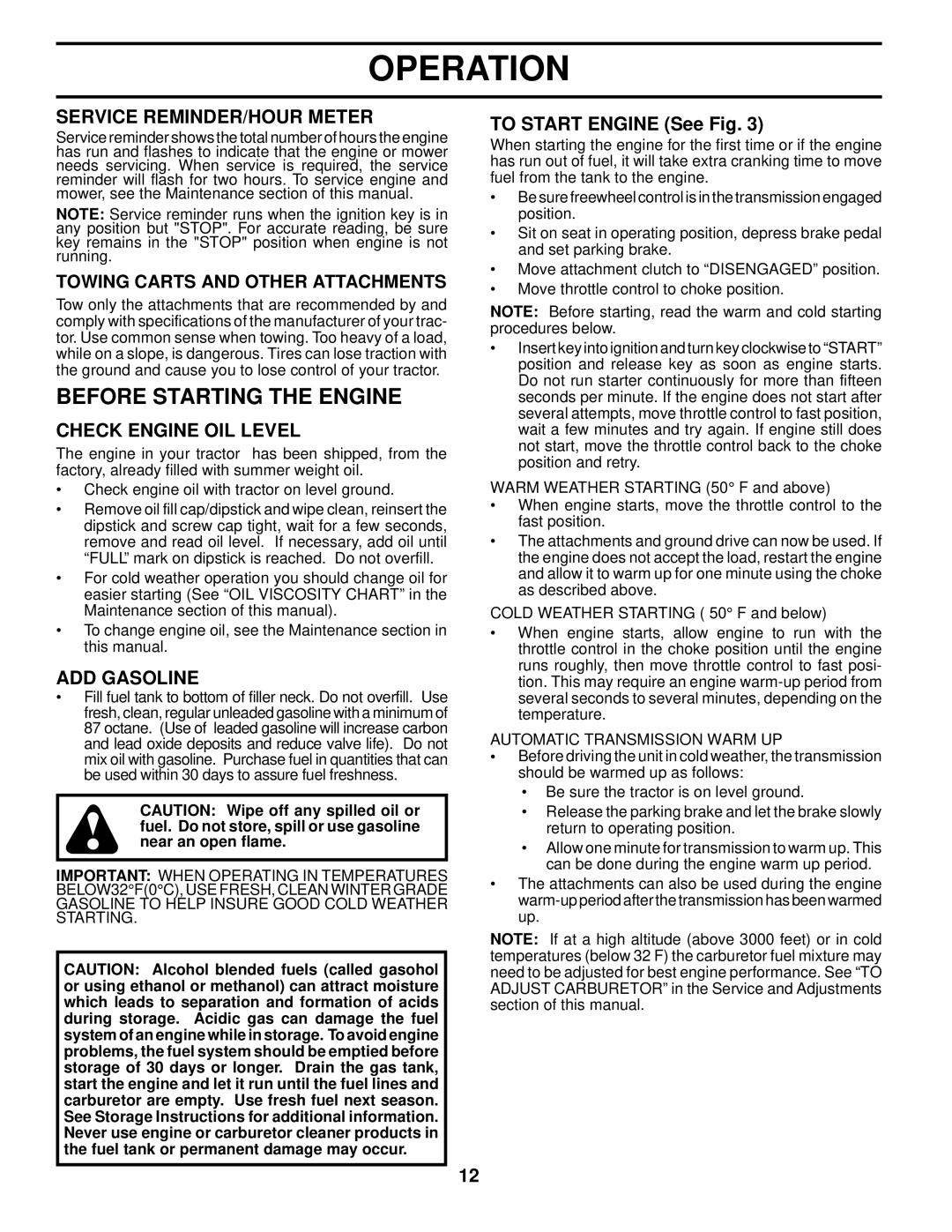AP1720-E2 specifications
The Husqvarna AP1720-E2 is a pioneering battery-powered backpack blower that reflects the company’s commitment to innovation and sustainability. Designed for both professional and occasional use, this model exemplifies efficiency, performance, and comfort, making it an invaluable tool for lawn care and landscaping professionals.One of the standout features of the AP1720-E2 is its powerful brushless motor, which provides a robust air flow rate of up to 23.5 m³/min. This means users can expect impressive performance even in demanding tasks. The blower is engineered to deliver high air speeds, enabling effective clearance of leaves, debris, and even light snow, making it versatile for various conditions.
A significant technological advancement in the AP1720-E2 is its battery management system. The model is compatible with the Husqvarna Bli battery series, allowing for extended run times and rapid charging. This flexibility makes it ideal for long workdays where downtime needs to be minimized. The blower can run efficiently for over an hour with a single charge, depending on the chosen battery, providing ample power for extensive clearing tasks.
In terms of user comfort, the AP1720-E2 features an ergonomic backpack design that distributes weight evenly across the user’s back. This reduces operator fatigue during prolonged use, making it suitable for large properties. The adjustable harness and padded backrest further enhance comfort, allowing for better maneuverability and control.
Noise levels are an important consideration for many users, especially in residential areas. The Husqvarna AP1720-E2 stands out with its remarkably low noise output, making it perfect for use in noise-sensitive environments. This eco-friendly approach aligns with global trends toward quieter and more sustainable landscaping equipment.
Moreover, the blower is equipped with intuitive controls that are easy to navigate, ensuring a seamless user experience. Features such as cruise control and variable speed settings allow operators to adjust airflow according to the specific task at hand, increasing efficiency and effectiveness.
In summary, the Husqvarna AP1720-E2 combines powerful performance, advanced battery technology, and user-friendly features into a practical package. Its portability, comfort, and low noise levels set a new benchmark in the world of battery-powered blowers, making it an excellent investment for anyone looking to enhance their landscaping capabilities while also being environmentally conscious. This model is a testament to Husqvarna's dedication to quality and innovation in outdoor power equipment.

